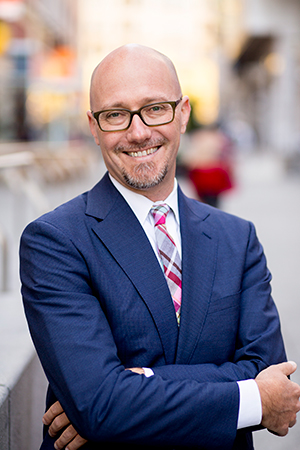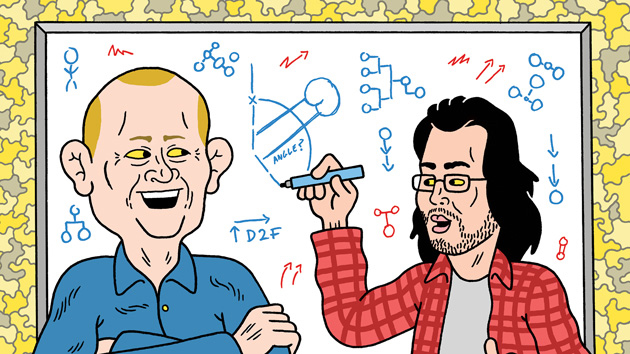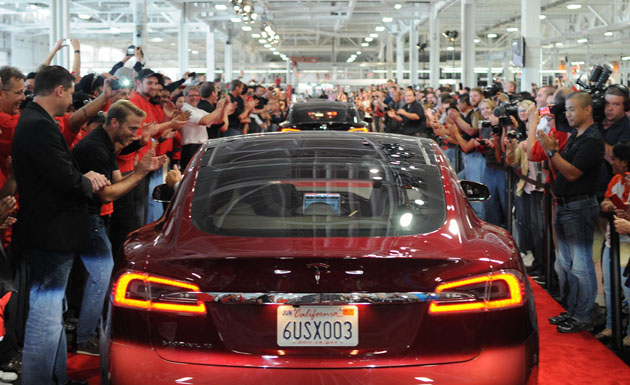When Gabriel Metcalf, then 26, co-founded City CarShare—the first technology platform to give urbanites easy access a car when they needed one, even for an hour—he wasn’t looking to cash in. Metcalf, an environmentally minded urban planner, had loftier goals. He envisioned a nonprofit car-sharing collective that would go mainstream, freeing Americans from the burdens of private car ownership and removing countless carbon-spewing vehicles from the road in the process.

Unlike your average tech startup, City CarShare was (and still is) an “alternative institution”—one that sets out to change the status quo by offering a new model for doing things. More examples? Worker-owned cooperatives. Community land trusts. And even good old representative democracy, which began in the colonies as a parallel system to British rule and provided the structural underpinnings for self-governance in the wake of the American Revolution.
Now 45, Metcalf no longer runs the car-sharing service. He’s president of SPUR, a Bay Area nonprofit that helps solve regional problems related to things like transit infrastructure, affordable housing, and climate change adaptation. But he’s still spreading his gospel via a new book, Democratic by Design, which explores the historical track record of alternative institutions, looks at what makes them succeed and fail, and calls on activists to incorporate AIs in their arsenal of solutions to society’s most intractable problems.
Mother Jones: With City CarShare, you hoped to out-compete the private automobile in the cities where you operated. Do you look back and think, “Boy, was I naïve?”
Gabriel Metcalf: No. Since we launched, car ownership has actually been declining quite a bit—for people who live in cities and for young people. I think we were tapping into something in the zeitgeist about Americans being sick of spending time sitting in traffic and not wanting to deal with the hassles of car ownership.
MJ: For young people, I totally get it. But for busy families with kids who can afford automobiles, asking them to give up their cars entirely seems like a stretch. I could see families scaling back to one car from two or more.
GM: Time will tell. I think we’re seeing a change in the culture brought on in part by the emergence of alternatives like car-sharing and in part by the long-term consequences of a suburban land-use model coming home to roost. Many more people are opting for walkable inner-city lifestyles. Of course, in much of America we built our communities at such low densities that people still have to drive everywhere. Changes like this are never all or nothing. But the transportation system is changing more than anyone would have believed even 20 years ago.

MJ: You note in the book that swapping your gas-guzzler for a Honda Civic isn’t necessarily the answer, because the carbon cost of building a new car can equal that of driving it over the car’s lifetime. That’s a pretty amazing stat. Will you elaborate?
GM: We’ve got some footnotes in the book for those who are interested. But whether that’s the exact number or not, the general point is that electric vehicles are not a panacea. They still involve a lot of manufacturing impact, they still require an expensive (and environmentally damaging) road network, and they still take up a lot of space inside cities. So while EVs are undeniably better than conventionally fueled vehicles (at least in places working to decarbonize their energy grids), we wanted to focus on reducing the number of vehicles.
MJ: One of the things you learned with City CarShare was that, to appeal to the mainstream, an alternative institution has to appeal to people with a wide range of agendas—or no agenda at all.
GM: When you’re on the left, there’s a tendency to want to start with a shared understanding of the problem before moving onto solutions. With an alternative-institution strategy you don’t need to do that. Maybe a few people shared our analysis about the military-petroleum-industrial complex or the conflict between ubiquitous car ownership and city life, but it was also fine if people just wanted to save money or hassle.
MJ: This applies more broadly to climate change: It’s super difficult to get people to change their habits, especially if it means giving up on some convenience. What hope do we have of reaching people for whom climate change is still a pretty abstract concept? Or, let’s be honest, even reaching people who totally get it, but still can’t motivate themselves to alter their ways?
GM: Getting Americans to take meaningful action on global warming is probably the hardest thing we’ve ever faced. Some people compare it to the movement to end slavery in terms of how much it will require of us as a society and how hard it will be. It’s definitely not something that can be solved through an alternative institutions strategy by itself, although I do think there are some small contributions that can be made by demonstrating that renewable energy or carbon-neutral buildings are viable.
MJ: So, it seems like every Silicon Valley entrepreneur wants to “disrupt” old ways of doing things in favor of a profitable venture that, to steal a tech-startup cliché, makes the world “a better place.”
GM: There are a lot of parallels between the model of social change I talk about in my book and the model of innovation that exists in Silicon Valley. In both cases, the idea is to start small with a prototype, make improvements, and then scale it up. You don’t have to have every detail figured out before you start. It’s a good model for innovation. And as you can see from my case studies from the history of progressive social movements, it’s not a new idea. There are a lot of really interesting things coming out of Silicon Valley. The question we always have to ask is what problem are they trying to solve? Are they taking on problems that are important for the world? Some definitely are.
MJ: Do alternative institutions fail at a higher rate than startups?
GM: I don’t know. But alternative institutions face an added challenge when it comes to raising capital. It’s something every organizer struggles with.
MJ: What are some of their other pitfalls?
GM: One is being “co-opted,” meaning fatally compromising the mission of the project in order to keep it going. The early affordable housing movement is a tragic example of this. But there is an opposite danger as well, which is trying to stay so pure and uncompromised that the project stays marginal and does not have a big impact. The art of alternative institution-building is navigating between these dangers.
MJ: In the book, you talk about the shortcomings of modern democracy, which itself began as an alternative institution: The poor quality of the public conversations. The loudest people dominating. The dearth of public participation. People showing up at meetings to repeat slogans rather than deliberate. But wasn’t the democratic process always kind of like this?
GM: Yeah, I think it’s important to not idealize any of the democratic precedents, whether that be the New England town meeting or the Athenian polis. All of the models we know about had profound flaws. It’s important that we don’t just accept the form of democracy we have today as if it’s the end of the story. We need to be putting energy into coming up with new ways to make decisions and resolve conflicts together. I am especially interested in attempts to combine the dialogue you can get in a small group with the sense of greater fairness and legitimacy you get in more representative forms of democracy. One example is citizen juries, which are randomly selected, but then deliberate about problems in a structured way.
MJ: You portray so-called socially responsible investing as something of a farce, because the criteria for choosing the companies tend to be so weak. How do we get around the fact that true socially responsible investing tends to bring smaller financial returns, when even people who self-identify as progressives like to make money?
GM: One of the things I really try to unpack is what we can do to create more room for “high-road” companies, to avoid a race to the bottom in which companies are under pressure to cut wages and avoid environmental regulations—which then puts communities under pressure to get rid of their own standards. This is the pervasive trap that we often find ourselves in, with the democratic process captive to the economy. There’s no easy answer, but alternative institutions have a key role to play. First, we need to create more firms that are structured to do the right thing—for example, workers co-ops or businesses that blur the lines between nonprofit and for-profit structures, or even traditional businesses that are engaged in activities that are socially beneficial. But for those firms to survive and thrive, we need to find better ways to harness the purchasing power of mission-driven institutions to support them. I write a lot about the potential of things like labor union pension funds and anchor institutions within communities to use their economic power for good.
MJ: Sounds great. But these “high-road” companies are a small minority, and getting big mission-driven institutions like pension funds and churches and local governments to change their investment habits is a formidable challenge. How do you see that happening?
GM: One of the models that has gotten a lot of attention lately is the Evergreen Cooperatives in Cleveland. They were inspired by the Mondragon cooperatives in Spain, which are the largest network of worker-owned cooperatives in the world. As they tried to translate that model into the context of an impoverished city coping with deindustrialization, they hit on the idea that they could get the hospitals and universities in the neighborhood to use their purchasing power to support workers co-ops. So they started a professional laundry service that the hospital uses. It’s providing jobs, training, and actual ownership to people with limited options. It’s not going to hurt the hospital’s economic health to be supporting this kind of enterprise. I see vastly more potential for mission-driven institutions—generally large nonprofits and investment funds—to use their economic power to support the high-road economy.
The trick is, they have to grow more or less in parallel: If there are too many progressive institutions seeking capital, the alternatives will be limited by lack of access to capital. Conversely, if there are not enough good progressive investment opportunities, the organizations that control the capital won’t be able to act on their good intentions. And you’re right, it is a daunting challenge to get those institutions to change. I hope my book reaches some of the board members of labor union pension funds, city hospitals, foundations, and credit unions—and I hope more of them will start to try to shift some of their investments in a direction that will accomplish more social change.
MJ: So what does success look like with alternative institutions? How often do they prove effective in achieving what they first set out to accomplish?
GM: Part of why I set out to write this book is that I think activists should be much more ambitious about this question. It’s not enough for an alternative institution to exist; the goal is to scale them up, to actually out-compete the mainstream institutions. We want to give people the chance to opt in to a better way of doing things, and that can only happen if the institutions are viable enough to touch lots of people. Alternative institutions work especially well as part of broader social movements that are also using other strategies, from community organizing to electoral politics. The goal is to raise people’s consciousness and give them new options to translate that raised consciousness into different life choices that will make a difference.












